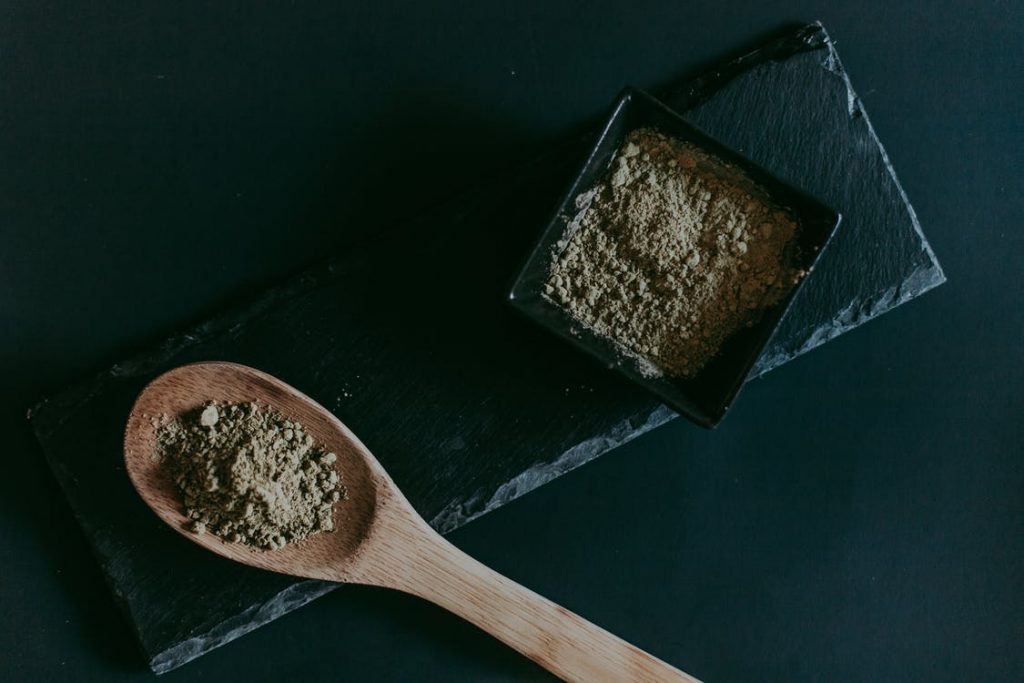
Kratom, a tropical tree originating in Southeast Asia, has gained attention for its practical effects on positive mood and pain. It has substances like mitragynine and 7-hydroxymitragynine, which bind to opioid receptors within the brain, causing sedation and euphoria alongside pain reduction, especially in high doses. Some promote it for managing pain and opioid withdrawal, but its use is controversial on account of safety issues and the possibility of abuse. Knowing the duration of kratom in a person’s body is critical to people planning on using it. There are several factors that affect the duration in which kratom remains detectable in a body, such as depending on what strain, dosage, and how regularly this is used by an individual, depending upon his or her metabolism rate and drug method of testing.
What is Kratom?
Southeast Asian tropical tree Mitragyna Speciosa, also known as Kratom, is a member of the coffee family. The leaves of the kratom plant were utilized for thousands of years in their native regions as a traditional medicinal herb because they contained psychotropic alkaloids, including mitragynine and 7-hydroxy mitragynine. Previously, leaves were consumed, used to make tea, or cooked with. These days, kratom can be purchased as extracts, capsules, or powdered leaves.
Kratom serves various uses: At a low dose, it has stimulating effects in the body; when administered in higher doses, it relaxes. It is also used for the relief of opioid withdrawal symptoms.
However, kratom is controversial in safety concerns, abuse, and legality issues, which differ across nations. In the United States, it has not been approved by the FDA for medical use, and it is warned about its potential abuse case, DEA. However, these concerns have not discouraged some users who promote Happy Go Leafy kratom as a natural alternative for pain and opioid withdrawal therapy. The scientific and medical world calls for further research to fully establish the effects of kratom, its safety, and the risks associated with its use.
How Long Does Kratom Last?
The duration of the effects of kratom use is highly dependent on many factors, including type of stress, dosage, metabolism within the individual, and general body composition On average a, the effect of kratom is seen within 5 to 10 minutes and lasts 2 to 5 Hours.
Thus, the strain of kratom affects both intensity and duration of effects significantly. Some strains, such as Maeng Da, are known for their strength and may lead to prolonged effects. However, strains like Bali or Indo may have a shorter duration.
Dosage is another significant factor. Weaker doses of kratom typically result in more stimulating effects that last for a brief time. On the other hand, higher doses – that are more sedative – can be effective for a longer period of time. It is also important to note that the threshold for a high or low dose can differ from person to person.
The effects of kratom last for a different amount of time due to individual differences in metabolism and body composition. Some elements that influence the metabolism of kratom include age, liver function, and body mass.
Other factors that may influence the onset and length of effects include the mode of consumption: chewing leaves, drinking brews tea orally, or using capsules, among others. For instance, capsules may have a slower digestion that would delay the onset of effects but perhaps prolong the duration.
Effects of Kratom
Stimulating Effects
When it is taken in a low dose (below 5 grams), kratom works like a stimulant and has the same effect as caffeine. Human respondents have reported higher energy, awareness, and sociability. It lifts mood, lowers anxiety levels, and is known for its beneficial outcomes like a boost of energy and a better focus. These characteristics are associated with white and green vein strains.
Sedative Effects
In higher dosages (above 5 grams), kratom has a calming effect, most noticeably as an analgesia in red-veined strains. Users get a sense of tranquility comfort, and it successfully-provided relief, which is why it is also practical for persons suffering from constant pain. Other properties diminish discomfort in physical and emotional aspects, yet at the highest dose level, it produces a euphoric state like using opioids.
Opioid Withdrawal Relief
Kratom is acknowledged as a viable source in treating opioid withdrawal. Its alkaloids bind to opioid receptors, producing the desire-seeking pleasure counts pain, muscle aches, and anxiety. Although it is effective and has no side effects in the treatment of opioid abuse, its credibility as a cure to an opioid crisis remains unconfirmed since this medication does not have warranty options.
Cognitive Effects
Some users of kratom report cognitive improvements such as better focus and clearer thought processes, particularly with green and white strains. These nootropic-like effects are subjective and vary among individuals.
Potential Adverse Effects
Kratom can also have adverse effects, especially when used in high doses or over long periods. These include nausea, constipation, dependency, and withdrawal symptoms. In rare cases, it can lead to severe health complications. Sedative effects, while helpful for pain and anxiety, may cause drowsiness and impaired motor coordination. Users need to be aware of these risks and use kratom responsibly, balancing its benefits against potential downsides.
Is Kratom Detected on Drug Tests?
Usually, a drug test such as the SAMHSA-5, commonly used nowadays and also integrated into most employment screenings, does not detect Kratom but tests for substances prone to be misused, like marijuana, cocaine, amphetamine, and opiates, including phencyclidine (PCP). The usual to be tested for in these tests are among the primary alkaloids of kratom, mitragynine, and 7– 7-hydroxymitragynine.
However, specialized drug tests to detect kratom do exist. These tests, such as certain urine or blood tests, can identify kratom’s unique alkaloids. Such specialized testing is more common in circumstances where kratom use is suspected or in environments where its use is of particular concern, like drug rehabilitation centers or legal settings.
It’s important to note that the detectability window for kratom in these tests can vary. There are several factors that affect how quickly someone becomes alcohol-impaired as necessitated by usage frequency, quantity consumed, and even individual metabolism rates in relation to the type of test used. Usually, one can detect kratom in urine for up to a week and quite considerably in blood for several days after it has been consumed.
What Factors Affect Kratom Duration?
Strain Varieties:
All different strains are characterized by varying cross-sections of their alkaloid profile, which in many ways determine potency and duration. For example, the long hours of effectiveness for Maeng Da while Bali strains can dramatically be short.
Quality: The essence and quality of kratom especially contribute to the phenomenon. High-grade, refined kratom gives greater, more sustained results.
Dosage
Amount Consumed: These lower doses are generally excitants, and this tends to affect for a shorter period, but if the dosages become higher, it become much longer-lasting sedatives.
Method of Consumption: The type of kratom intake, powder, capsules, tea, and others also impacts the speed of absorption as well as the duration of its effect.
Individual Physiology
Metabolism: The other factor that predicts the duration of effects incurred by kratom is a person’s metabolism, whereby those with faster metabolism will process the drug very fast.
Body Composition: Similar variables, such as weight and body fat percentage, along with the general condition of an individual’s health, may affect the duration of kratom activity.
Tolerance: Usage of drugs over a short period can lead to the formation of tolerance among regular users, which makes them need higher doses to get high even for low durations.
Interactions with Other Substances
Concurrent Use of Other Substances: When mixed with other drugs or alcohol, the body may alter the time and effects of taking kratom.
Food Intake: Taking kratom on a full or empty stomach can affect how quickly it’s metabolized, thus influencing its duration.
How Long Does Kratom Stay in Your Blood?
Kratom’s primary alkaloids, mainly mitragynine, can typically be detected in the blood for about 24 to 72 hours after use. This window detection depends on several factors and can, therefore, differ remarkably. These include the dosages and daily frequency of kratom, the metabolism rate of an individual, his overall health, and body composition.
People who have been using kratom regularly and for a long period usually take longer to test negative from a urine test than those who use kratom infrequently or in small amounts. Furthermore, the individual liver function and metabolism parameters also contribute greatly to the fast or slow breakdown of kratom in the body. The actual time can be drastically different from one person to another.
How Long Does Kratom Stay in Your Urine?
Frequency of Use: Kratom may be detectable in the urine of regular users for a longer period if compared to occasional users. With long-term use, the body will hold on to the substance, and detection times may be prolonged.
Dosage: The amount of alkaloids that are left to be processed once a higher dose of the kratom drug has been administered can lead to an extended period of detectability of the drug in the urine.
Metabolism and Body Composition: People who metabolize faster may let go of kratom from their bodies at a higher rate. Other factors that help to determine how long kratom stays in urine include body mass, hydration, and overall health.
Type of Kratom: Alkaloid content is different in different strains of kratom, and the level of alkaloids ranges from mild to intense, which affects the duration of presence in the body.
Kratom can be identified in the normal dose range for 7 to 9 days after use. However, this may amount to a maximum of 15 days or beyond in cases of daily large dosage. These time periods are not definite and can differ significantly depending on the person. It is also critical that users should know about these variables, especially if they are screened through urine drug testing.
Conclusion
Alkaloids such as mitragynine and 7-hydroxymitragynine are responsible for the mood-enhancing and pain-relieving properties of Khatom, a tropical tree native to Southeast Asia. Particularly at larger doses, these drugs act on the opioid receptors in the brain to produce effects ranging from pleasure to drowsiness. The usage of kratom is debatable, and there are possible concerns about misuse and safety. Its detectability in the body hinges on factors like strain type, dosage, user metabolism, and test methods.
Traditionally used for its medicinal properties, kratom today comes in forms like powdered leaves and capsules, offering stimulating effects at low doses and sedative effects at higher doses. It is also used for opioid withdrawal relief. However, its safety and legality are debated. Kratom can be detected in urine for about 7 to 9 days and in blood for 24 to 72 hours after use. Duration of effects and detectability are influenced by factors such as dosage, individual metabolism, and frequency of use. While kratom has potential benefits, it also poses risks, emphasizing the need for cautious use.
FAQs
Is kratom legal?
In the US, it is legal federally but prohibited and restricted in some states. Globally, it is outlawed in many nations. Users should check local laws as kratom’s legal status can change.
Is kratom safe to use?
There is still a lot of discussion about whether it is safe or not. Although some individuals use it without any significant problems, kratom may cause some side effects But there are more serious concerns that include becoming addicted, dependent on it, or experiencing withdrawal symptoms.
Does kratom help with anxiety?
Some of the users state that kratom works well for anxiety, especially if it is sedative in nature.
Does Kratom Get You High?
In large amounts, kratom can induce opioid-like euphoria. Kratom binds to the opioid receptors, which result in varying levels of mood elevation and perception.
Can you use kratom for pain?
Kratom is widely used by many for pain relief, particularly strains that are sedative in nature and when taken at a higher amount.


















Follow Us